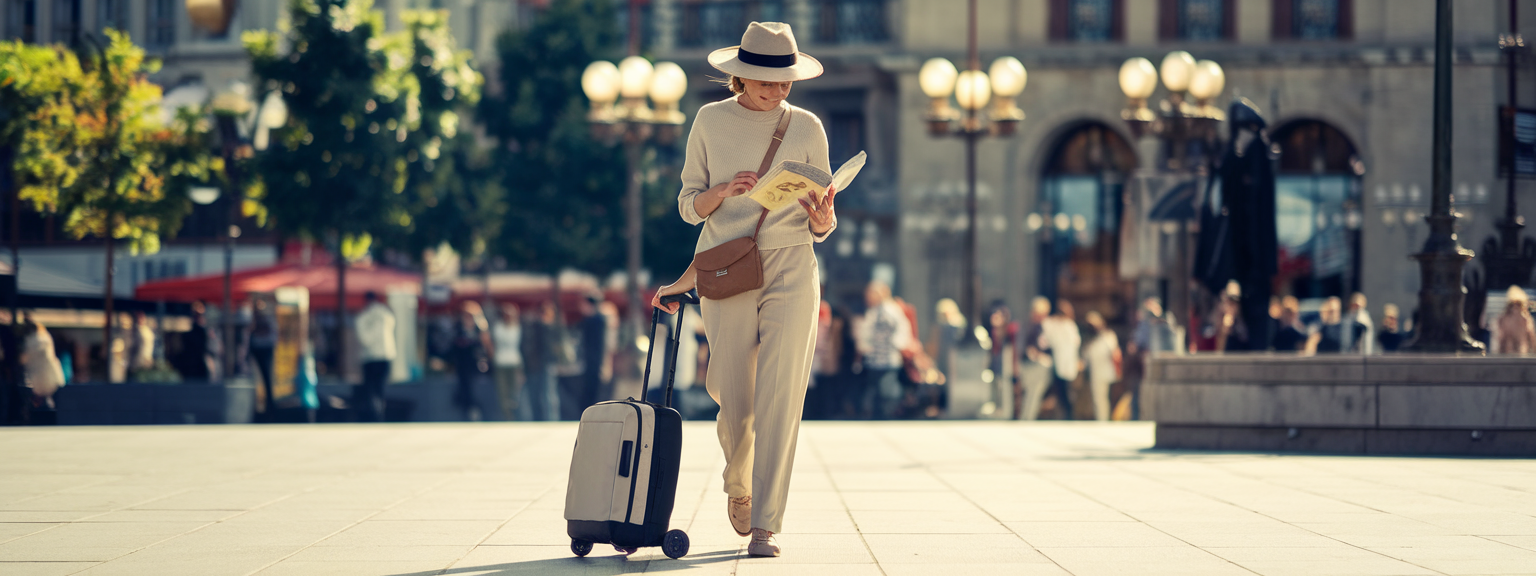Travel Safety Tips: Essential Security Advice for Every Trip
Travel should broaden your world, not heighten your worry — and these travel safety tips are designed to help you do exactly that. Within the first 100 words you’ll get actionable travel safety checklist items and travel security guidance to prevent theft, handle emergencies, and reduce risk on city breaks or long international journeys. This guide covers essential places to know, cultural behaviors that affect safety, hidden insider tactics, a sample safe-day itinerary, and destination‑specific packing and planning so you can travel smarter and with confidence.
📍Must-See Attractions — travel safety tips
Local Emergency Numbers
Know the local equivalent of 911 before you arrive: police, ambulance, fire, and the emergency line for your embassy or consulate. Save them in your phone, write them on a card in your wallet, and add them to a cloud note you can access offline.
Image suggestion: smartphone screen showing emergency numbers — Alt text: “Smartphone displaying local emergency contact numbers”
Nearest Hospital and Pharmacy
Identify the closest hospital and a 24-hour pharmacy to your accommodation. Note specialties (e.g., trauma, pediatrics) and whether English is spoken. Add directions and public-transit options to your notes.
Image suggestion: hospital entrance sign — Alt text: “Hospital entrance near a city center”
Police Station / Tourist Police
Locate the nearest police station or tourist police office. Tourist police often help with language barriers, lost items reports, and simplified incident statements for insurance claims.
Image suggestion: municipal police station exterior — Alt text: “Local police station where tourists can report incidents”
Safe Transport Hubs
- Identify official taxi ranks, ride-share pickup zones, and reputable transit stations.
- Pre-book airport transfers where possible to avoid aggressive drivers and price gouging.
Image suggestion: well-lit taxi rank with official signage — Alt text: “Official taxi rank with licensed vehicles”
Embassy/Consulate Location
Pin the nearest embassy or consulate and store contact details. If you lose a passport or need urgent assistance, knowing the route and office hours saves precious time.
Image suggestion: embassy building with flag — Alt text: “Foreign embassy building useful for traveler emergencies”
🎭 Local Culture & Experiences — travel safety tips
Crowd Dynamics at Festivals
Large cultural events can be exhilarating but risky. Learn procession routes, entry/exit points, and peak times to avoid crushes. Standing on slightly elevated ground or near official barriers reduces jostling.
Food Safety for Street Eats
Street food is often safe when turnover is high; look for long lines, visible cooking heat, and vendors who use fresh ingredients. If unsure, follow locals to the most popular stalls.
Dress Codes & Respectful Behavior
Respectful dress can reduce unwanted attention in conservative areas and inside religious sites. Ask politely before photographing people and observe local greetings to avoid misunderstandings.
Anecdotes & Quotes
Quote: “At the summer parade I learned to keep my bag zipped and wear a crossbody — otherwise you’re an easy target,” — Maya, solo traveler.
Anecdote: Observing local queuing etiquette in a busy market helped one traveler avoid a push that could have dropped their phone; small cultural details protect property and dignity.
🔑 Hidden Gems & Insider Tips — travel safety tips
Micro‑timings for Popular Spots
Visit famous sites in the first hour after opening when crowds are smallest and pickpocketing opportunities are reduced. Early mornings mean calmer streets and better photos, too.
Cash Strategy
- Distribute cash: small daily amount in your wallet, emergency stash in a money belt, and a hidden note in luggage.
- Use cards where secure, but have local currency for small vendors and transport.
Digital Backups & Security
Scan passports, visas, insurance policies, and important receipts to cloud storage. Carry an encrypted USB drive in locked luggage for offline backup. Use strong passwords and two-factor authentication for travel accounts.
Local Safe Apps & Neighborhood Alerts
Beyond global apps, many cities have local safety apps or WhatsApp community groups for neighborhood alerts, legitimate taxi services, and immediate safety updates. Ask hotel staff for recommended local apps.
Distraction Scam Alerts
Learn common local cons — staged fights, friendship‑bracelet distractions, or “helpful” strangers offering directions. If approached, step away to a busy space, keep your bag in front, and refuse politely.
Neighborhood Watch Tip
Ask trusted locals (hotel staff, café owners, shopkeepers) where they wouldn’t leave a bag. Local insight often trumps guidebooks for safety.
Quick actionable items: use RFID-blocking sleeves for cards, keep one backup card separate, and pre-pay reputable transfers from the airport to your hotel. These travel security habits reduce friction and lower your exposure to opportunistic theft.
🗓️ Sample Itinerary or Day Plan — travel safety tips
A Secure Day in a City — Sample Schedule
-
07:30 — Morning walk in central park (free)
Safety note: Go with a group or stick to main paths; avoid isolated trails.
-
09:00 — Breakfast at a well-reviewed café (US$5–15)
Transit: 10–15 min walk or official transit. Safety note: Keep bag in sight; choose a table where you can see your bag.
-
10:30 — Museum visit (US$10–20)
Transport: Public tram or pre-booked ride (US$2–10). Safety note: Leave valuables locked in hotel safe; carry document copies.
-
13:00 — Lunch in market (US$8–12)
Safety note: Choose busy stalls with high turnover; watch your belongings while ordering.
-
15:00 — Neighborhood exploration & local artisan shops
Transit: Short taxi (US$6–12). Safety note: Use official taxi stands or app-based rides; agree on fare or ensure meter use.
-
18:00 — Early dinner and sunset view (US$12–25)
Safety note: Avoid dark alleys after dusk; stick to well-lit routes back to accommodation.
-
20:00 — Return to lodging / brief document check (free)
Safety note: Lock doors, enable room safe, and keep emergency cash (US$50–100) aside.
Estimated daily total: US$43–84 (varies by city). Emergency contingency: identify nearest hospital and keep a small emergency fund plus a local SIM or eSIM for quick calls.
💡 Travel Tips Specific to the Destination — travel safety tips
Packing Suggestions
- Money belt or neck pouch, lockable luggage, daypack with anti-theft zippers.
- First-aid basics, local SIM or eSIM, portable charger, photocopies of documents.
Local Etiquette & Safety Behavior
Respect religious sites with modest dress, avoid political protests, and always ask permission before photographing people. These safe travel practices prevent misunderstandings that can escalate.
Best Times to Visit for Safety
Daylight hours typically have lower crime rates; avoid poorly lit areas and neighborhoods with known late‑night issues. Peak tourist season can mean more crowds — balance safety with experience.
Safety Notes: Theft Prevention & Emergency Plans
- Keep your bag in front in crowded areas and avoid flashy jewelry.
- Share your itinerary with a trusted contact, set check-in times, and register with your embassy when appropriate.
- Buy travel insurance that covers theft, medical evacuation, and trip interruption — part of solid travel risk management.
Quick Travel Safety Checklist
- Copies of passport and visas (cloud + physical)
- Emergency contacts and local numbers
- Travel insurance details
- Local cash, charged phone, charger, medication list
Bringing It All Together
With simple preparation — from carrying the right gear and knowing emergency contacts to following cultural norms and using smart transport — you can dramatically reduce risk and enjoy richer travel experiences. These travel safety tips and the sample safe-day plan give you a practical framework to travel with confidence.
What travel safety trick changed the way you travel — and where did you use it? Share your best tip below or forward this travel safety checklist to a friend planning a trip. Subscribe to our newsletter for monthly safe travel tips, destination safety updates, and exclusive travel security checklists.


![[Houston International Food Platter] [Vibrant platter of global dishes showcasing Houston international food]](https://roamwriters.com/wp-content/uploads/2025/11/houston-international-food-bold-flavors.png)
![[Cultural Etiquette International Meeting] [Colleagues exchanging greetings in an international office demonstrating Cultural Etiquette]](https://roamwriters.com/wp-content/uploads/2025/11/cultural-etiquette-international-meeting.png)

![[Travel Emergencies Response] [Traveler checking documents and phone for help after travel emergencies]](https://roamwriters.com/wp-content/uploads/2025/11/travel-emergencies-preparation-guide.png)